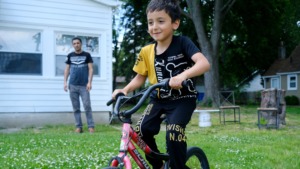The Latest
-
Top 10 Photos of 2025
Global Refuge's Top Ten Photo's of 2025.
Read More -
Global Refuge Deeply Alarmed by Expansion of Sweeping Travel Ban
Global Refuge strongly condemns the Trump administration’s decision to expand its travel ban to 39 countries, further limiting lawful migration through a sweeping mix of full and partial entry bans.
Read More -
Global Refuge Reaffirms Commitment to Human Dignity
At Global Refuge, we honor and recognize the inherent dignity of all people. For 86 years, we have walked alongside refugees and other immigrants as they build their new lives in the United States—often fleeing war, persecution, and humanitarian disaster in pursuit of a better life. We welcome newcomers not simply because it is the right thing to do, but because it is central to our mission and identity: As a witness to God's love for all people, we stand with and advocate for children, refugees, and other immigrants , transforming communities through ministries of service and justice.
Read More -
7 Ways to Make a Difference for Immigrants and Refugees This Season
See seven ways to help refugees and immigrants this holiday season.
Read More -
Global Refuge Responds to Administration’s Plan to Re-Vet Lawfully Admitted Refugees
Global Refuge is deeply concerned by reports that the Trump administration's U.S. Citizenship and Immigration Services (USCIS) will review and potentially re-interview the cases of more than 200,000 refugees who were lawfully admitted to the United States between 2021 and early 2025, while also halting the processing of their applications for lawful permanent residency.
Read More


